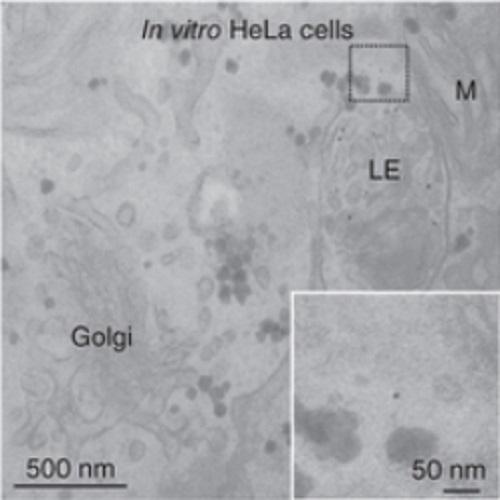Image-based analysis of lipid nanoparticle-mediated siRNA delivery, intracellular trafficking and endosomal escape.
Delivery of short interfering RNAs (siRNAs) remains a key challenge in the development of RNA interference (RNAi) therapeutics. A better understanding of the mechanisms of siRNA cellular uptake, intracellular transport and endosomal release could critically contribute to the improvement of delivery methods. Here we monitored the uptake of lipid nanoparticles (LNPs) loaded with traceable siRNAs in different cell types in vitro and in mouse liver by quantitative fluorescence imaging and electron microscopy. We found that LNPs enter cells by both constitutive and inducible pathways in a cell type-specific manner using clathrin-mediated endocytosis as well as macropinocytosis. By directly detecting colloidal-gold particles conjugated to siRNAs, we estimated that escape of siRNAs from endosomes into the cytosol occurs at low efficiency (1-2%) and only during a limited window of time when the LNPs reside in a specific compartment sharing early and late endosomal characteristics. Our results provide insights into LNP-mediated siRNA delivery that can guide development of the next generation of delivery systems for RNAi therapeutics.

- Nat. Biotechnol. 2013 Jul 23;31(7):638-46
- 2013
- Cell Biology
- 23792630
- PubMed
Enabled by:
